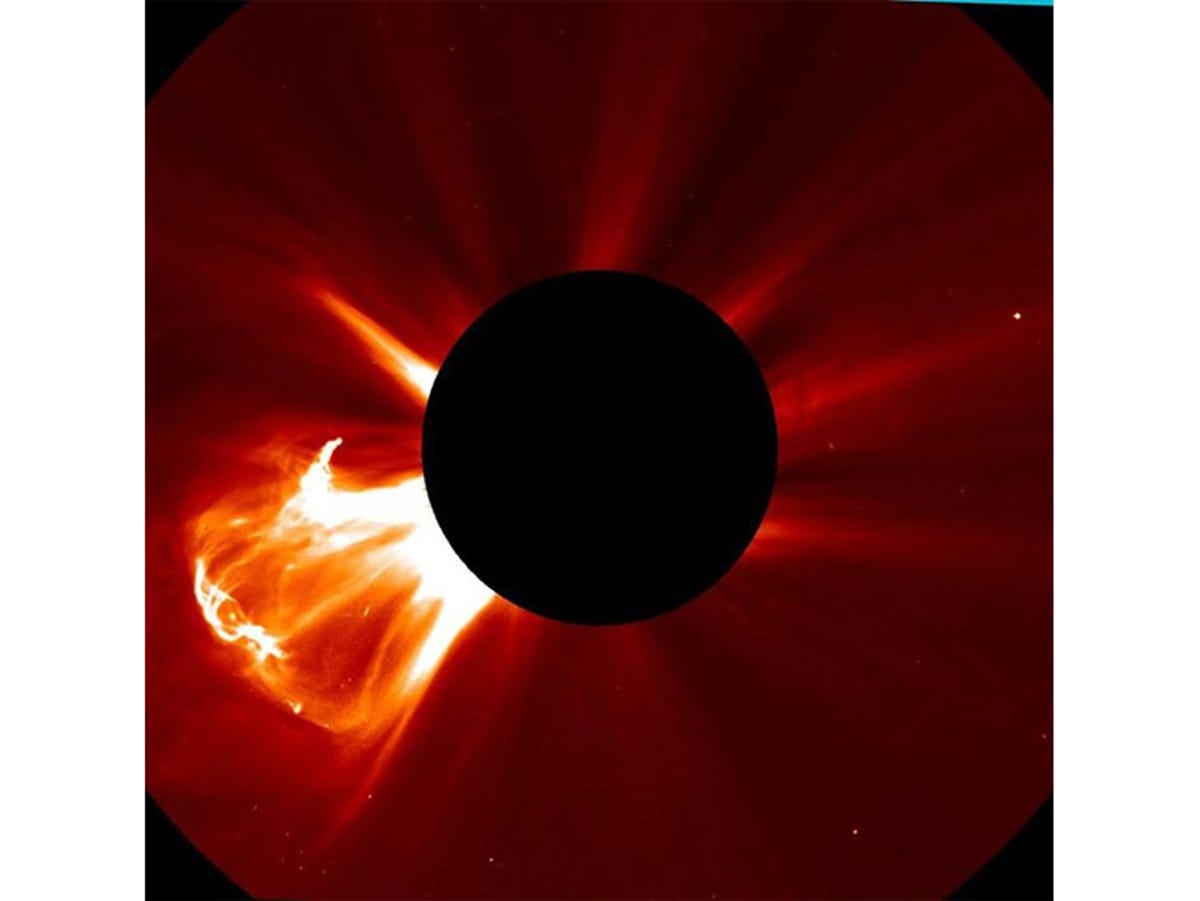August solar flares in pictures
August 24 and 25 saw a surge in solar activity, with NASA's Solar Dynamics Observatory capturing a series of stunning photos of three coronal mass ejections.

On August 24, the sun erupted with a M5.9-class coronal mass ejection, which is classified as a mid-level solar flare -- about 10 times weaker than an X-class flare, some of which we saw late last year and early this year. That doesn't mean they aren't powerful, though -- this coronagraph image sees a massive burst of material exploding away from the sun.
The coronagraph, called LASCO C2, is on board the NASA/ESA spacecraft SOHO. It has a solid disc in the centre to block out the sun so that the camera can better capture the plasma of the CME without it being obscured by the star's bright light.
Captured by NASA's Solar Dynamics Observatory satellite, this image shows the CME on the left of the sun in the blended wavelengths of 171 (yellow) and 304 (red) Angstroms.
This close-up shows the flare in the 131 and 171 Angstrom wavelengths. The 131 Angstrom wavelength, in teal, shows the extremely hot material in the flare, while 171 shows the magnetic loops in the sun's atmosphere.
The second flare, registering as an M2.0, peaked on August 25, marking the fourth M-class CME in as many days. This 131 Angstrom wavelength photo captured by the SDO shows the flare erupting from active Region AR2146. You can see it just right of the sun's centre.
The third flare occurred on August 25 too, registering as M3.9 and erupting from the same place as the M2.0 flare -- region AR2146. This image, taken in the 335 Angstrom wavelength, highlights the active regions of the sun's corona, showing solar flares and CMEs in bright colour.

